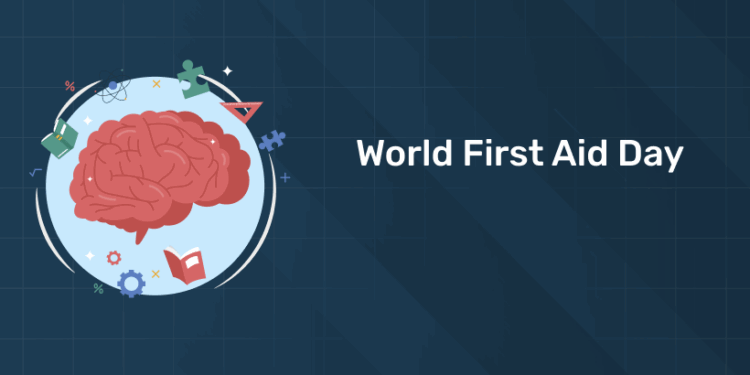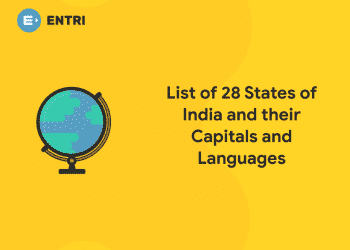Table of Contents
World First Aid Day is observed on the second Saturday of September annually every year to raise awareness that how first aid can save lives. In 2025, it comes on 13 September. In this article, we will discuss the World First Aid Day 2025: Theme, History, and Quiz
The term ‘First Aid’ means the help that is provided to anyone who is suffering from disease, damage, or an injury. Its primary goal is to protect life and keep the condition from worsening. Every time it is not necessary that some medical staff help. In an emergency, even ordinary people can help and can save someone’s life by providing first aid. First aid kit we mostly have in our home and in fact, we should carry it while traveling as well.
World First Aid Day 2025 Date – September 13
In this article readers can get a glimpse on
- History and Objective of World First Aid Day
- World First Aid Day Theme 2025
- World First Aid Day Quiz
World First Aid Day Theme 2025
1: Who was the first woman President of India?
World First Aid Day 2025, with its theme of “First Aid and Climate Change,” aims to highlight the crucial role first aid plays in a world increasingly affected by extreme weather events. The theme underscores the urgent need to adapt first aid practices to the growing environmental threats, such as heat waves, storms, floods, droughts, and forest fires.
Key messages and objectives of this theme include:
- Empowering local populations: The goal is to raise awareness and equip communities with the skills to cope with climate risks through first aid education.
- Promoting integration: The initiative encourages the integration of first aid into management strategies and climate change education programs to improve risk prevention.
- Adapting to climate-related disasters: It promotes updating and refreshing first aid knowledge to effectively respond to disasters caused by climate change.
- Inclusive approach: The theme encourages an inclusive approach, adapting training to all specific needs to reach as many individuals as possible.
By promoting this theme, the International Federation of Red Cross and Red Crescent Societies (IFRC) and the Global First Aid Reference Centre encourage people to develop their first aid skills and be prepared to act confidently in emergencies, particularly those brought about by a changing climate.
Free UPSKILLING Courses!
Take your first step toward mastering in-demand skills, acing interviews, and securing top-tier jobs with Entri's free upskilling courses.
Start Learning!World First Aid Day Previous Themes
Here are the themes from recent years as provided by the IFRC and its partners:
- 2015: “Take your time don’t risk your life!”
- 2016: “Do not overestimate your capacities near railway tracks.”
- 2017: “Distraction”
- 2018: “First Aid and Road Safety”
- 2019: “First Aid and Excluded People”
- 2020: “Adapting First Aid to the Pandemic”
- 2021: “First Aid and Road Safety”
- 2022: “Lifelong First Aid”
- 2023: “First Aid in the Digital World”
- 2024: “First Aid and Sports”
World First Aid Day: History
In 2000, World First Aid Day was started by the International Federation of Red Cross and Red Crescent Societies (IFRC). Do you know that every year, more than 100 Red Cross and Red Crescent Society people are made aware of the benefits of first aid in the world? Also, it raises awareness about the need for first aid and the right way to use it.
Also, IFRC says that first aid should be available to everyone because it helps at the time of the accident and sometimes it is effective also in saving the lives of people.
World First Aid Day: Objectives
– The first aim of World First Aid Day is to do necessary actions to save the life of injured or diseased people.
– The second aim is to handle the condition of an injured person by giving first aid and try to avoid infection.
– The third aim is to take the injured person immediately to the hospital before any mishappening.
In fact, while providing first aid we should be careful and if we don’t know what to do then it will be better to seek others for help and inform doctors. And sometimes it is also seen that while performing first aid people don’t know what they are doing and might be they hurt instead of helping. So, IFRC always focuses and encourages people to take basic training of first aid or at least educate themselves using any available reliable sources.
So, we can say that first aid help is important and plays a crucial role in our lives but appropriate training and knowledge are necessary while giving first aid to an injured or infected person. Also, we should always carry a first aid kit while traveling and we should have a first aid kit in our homes as well.
Free UPSKILLING Courses!
Take your first step toward mastering in-demand skills, acing interviews, and securing top-tier jobs with Entri's free upskilling courses.
Start Learning!First Aid Kits; Things Need to Keep in the First Aid Box
Well-stored first aid kits help you to handle your injuries and basic traumas. Keep at least one first-aid kit in your home and one in your vehicle. Check below to know the basic supplies in your trauma kits;
- Elastic wrap bandages
- Plasters
- Scissors
- Tweezers
- Antibiotic ointment
- Syringe
- Medicine cup or spoon
- Instant cold packs
- Adhesive tape
- Bandage strips
- Cotton balls and cotton-tipped swabs
- Safety pins
- First Aid Manual
- Disposable sterile gloves
- Thermometer
- Breathing barrier
- Eyewash solution
- Calendula or hydrocortisone cream for skin rashes
- Painkillers
- Refined water for cleaning wounds
- Duct tape
- Petroleum jelly or other lubricant
World First Aid Day Quiz 2025
1. In which year was World First Aid Day first observed?
A) 1995
B) 2000
C) 2005
A) Médecins Sans Frontières
B) International Red Cross and Red Crescent Movement
C) World Health Organization
3. What is the primary goal of World First Aid Day?
A) Encourage healthy diets
B) Spread life-saving first aid knowledge
C) Promote physical fitness
B) About 1 million
C) About 2.5 million
5. What is the minimum time brain damage can begin after cardiac arrest if no CPR is given?
A) 2 minutes
B) 4 minutes
C) 8 minutes
A) Cardiopulmonary Resuscitation
B) Cardiac Pulse Recovery
C) Central Pressure Response
A) Red
B) Green
C) Blue
A) 5 minutes
B) 10 minutes
C) 20 minutes
A) 101
B) 108
C) 112
Want More Engaging Questions?
Download our FREE PDF packed with insightful quiz questions to test your knowledge!
🔽 Click below to get your free copy now! 🔽
World First Aid Day Quiz 2025 PDF
World First Aid Day serves as a reminder that timely help can save countless lives. Emergencies often happen unexpectedly, and the first few minutes are the most critical. By equipping people with basic first aid knowledge, communities become safer and more resilient. The day emphasizes that first aid is not only for healthcare workers but for everyone who wishes to help in urgent situations.
Learning first aid empowers individuals to act with confidence instead of fear. Whether at home, school, workplace, or on the road, these simple skills can prevent serious harm and reduce fatalities. World First Aid Day inspires collective responsibility, urging people worldwide to take part in training and awareness. Ultimately, the day teaches us that saving lives often starts with ordinary people taking extraordinary action.
Free UPSKILLING Courses!
Take your first step toward mastering in-demand skills, acing interviews, and securing top-tier jobs with Entri's free upskilling courses.
Start Learning!Frequently Asked Questions
What is World First Aid Day?
World First Aid Day is observed every year on the second Saturday of September. It is organized by the International Federation of Red Cross and Red Crescent Societies. The day highlights the importance of first aid in saving lives. It spreads awareness that simple skills can make a big difference. The focus is on making first aid knowledge accessible to everyone.
Why is World First Aid Day important?
It reminds people that emergencies can happen anytime. Having basic first aid knowledge helps reduce injuries and save lives. The day promotes community responsibility and preparedness. It highlights that timely help can prevent serious complications. Most importantly, it empowers ordinary people to act in emergencies.
Who organizes World First Aid Day?
The International Federation of Red Cross and Red Crescent Societies leads the event. Many national Red Cross and Red Crescent societies take part. They organize training, workshops, and awareness campaigns. Schools, communities, and organizations also join in. This global effort ensures more people learn life-saving skills.
What are the main objectives of World First Aid Day?
The day aims to promote first aid education worldwide. It encourages communities to be prepared for emergencies. It raises awareness about common accidents and quick responses. It also motivates governments to include first aid training in schools. Overall, the objective is to build safer and more responsive societies.
What role does first aid play in everyday life?
First aid helps provide immediate care before professional help arrives. It can stop bleeding, prevent infection, or save someone’s life. Knowing first aid reduces panic in emergencies. It gives confidence to act quickly and correctly. Everyday accidents at home, school, or work can be managed effectively with first aid.
What are some basic first aid skills everyone should know?
People should know how to perform CPR for cardiac arrest. They should understand how to stop bleeding with pressure. Treating burns with cool running water is essential knowledge. Managing choking with the Heimlich maneuver is also important. These simple skills can make anyone a life-saver.
How does first aid training benefit communities?
Communities with trained individuals respond faster to emergencies. They reduce risks of disability and death in accidents. Training builds cooperation and trust among community members. It creates resilience during disasters or sudden medical cases. A well-trained community becomes safer and more confident overall.
Who can learn first aid?
First aid is for everyone, regardless of age or profession. Children, students, parents, and workers can all benefit. Training is simple and does not require medical background. Organizations like schools and offices often arrange sessions. Anyone willing to learn can gain these life-saving skills.
What are common situations where first aid is needed?
First aid is needed during cuts, burns, or falls. It is also vital in choking, fainting, and bleeding cases. Road accidents often require immediate first aid response. Heart attacks and sudden cardiac arrests need CPR. Everyday mishaps at home, school, or workplace also call for first aid.
How can someone get trained in first aid?
People can join certified first aid courses offered locally. Red Cross and Red Crescent Societies run regular training programs. Many hospitals and health centers provide workshops. Online resources are also available for learning basics. Training ensures confidence and readiness to act during emergencies.













